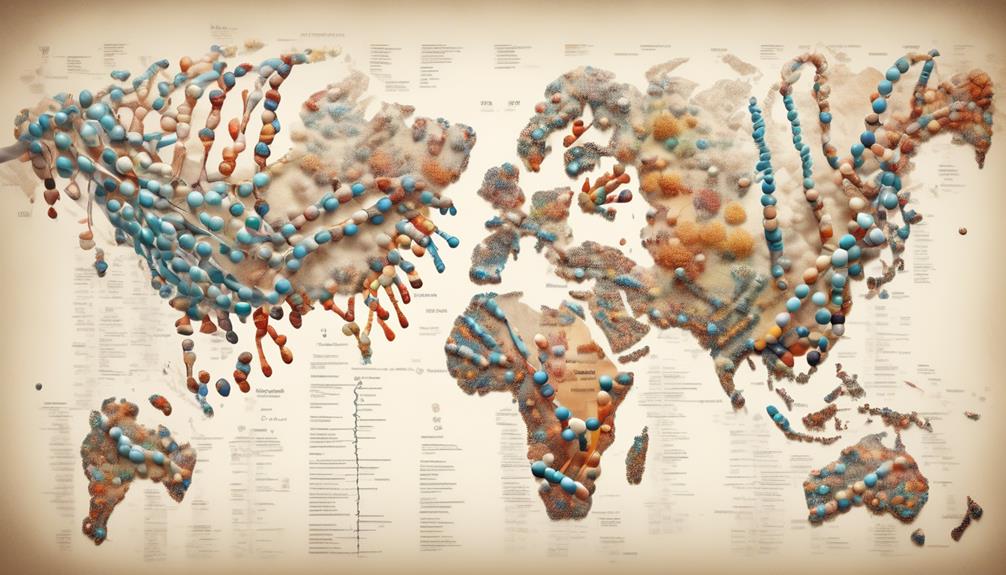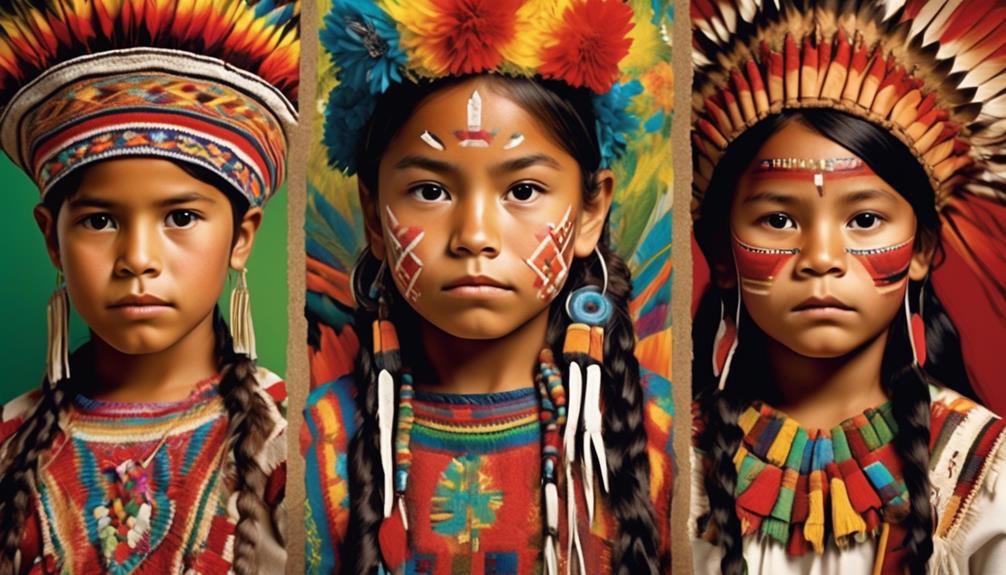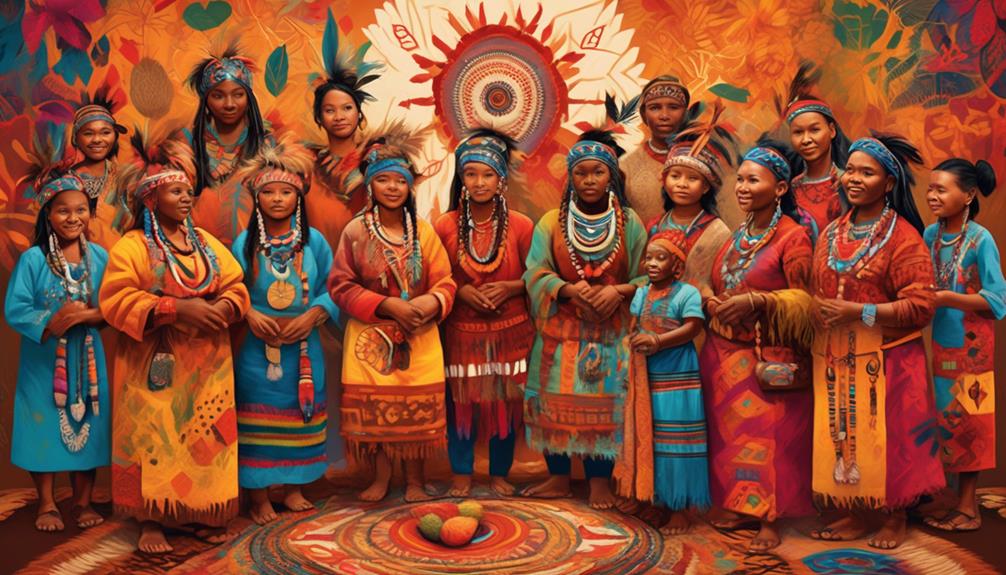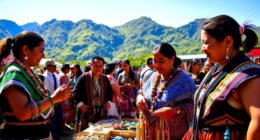We understand that indigenous populations lacked immunity for various reasons, such as historical isolation and limited disease exposure, genetic susceptibility to new pathogens, absence of domestic animals and zoonotic diseases, forced relocation and displacement effects, as well as ongoing health disparities and systemic inequalities. These factors collectively made indigenous populations more vulnerable to illnesses.
But what were the specific factors that contributed to this lack of immunity? And how did these factors interact to create such a significant health disparity?
Key Takeaways
- Historical isolation and limited immune exposure resulted in a lack of access to advanced medical practices and information, limited understanding of disease prevention and treatment, and weakened immune systems due to exposure to different climates.
- Genetic susceptibility to new pathogens, influenced by HLA alleles, innate immune receptors, cytokine gene variants, genetic diversity, and evolutionary history, plays a role in the susceptibility of Indigenous communities to diseases.
- The absence of domesticated animals in Indigenous communities limited their exposure to zoonotic diseases, contributing to a lack of immunity against new pathogens.
- Forced relocation and displacement disrupted traditional practices, eroded cultural identity and traditional healing knowledge, and weakened resilience against new pathogens.
Historical Isolation and Limited Immune Exposure
Due to their historical isolation and limited exposure to various pathogens, Indigenous populations may have lacked the immunities necessary to combat unfamiliar diseases introduced by outside contact. Limited medical knowledge and environmental factors played significant roles in this phenomenon.
The lack of access to advanced medical practices and information meant that Indigenous communities had limited understanding of disease prevention and treatment. Additionally, environmental factors such as living in remote areas with limited resources and exposure to different climates could have weakened their immune systems, making them more susceptible to new diseases.
Furthermore, the historical isolation of Indigenous populations meant that they had little to no contact with outsiders, resulting in a lack of exposure to a wide range of pathogens. As a result, when they encountered diseases brought by colonizers or explorers, their immune systems were unprepared to combat these new threats.
This lack of immune exposure due to isolation and limited medical knowledge contributed to the vulnerability of Indigenous populations when faced with novel diseases introduced by external contact.
Genetic Susceptibility to New Pathogens

Exposure to new pathogens can reveal specific genetic susceptibilities within Indigenous populations, potentially impacting their ability to combat unfamiliar diseases. Evolutionary adaptation has shaped the genetic makeup of Indigenous groups, influencing their responses to novel pathogens. Population genetics plays a crucial role in understanding why certain diseases disproportionately affect Indigenous communities. By examining the genetic diversity and evolutionary history of these populations, we can elucidate the genetic susceptibilities that have arisen due to historical isolation and limited immune exposure.
| Genetic Susceptibility Factors | Impact on Immune Response |
|---|---|
| HLA Alleles | Influence antigen presentation and T cell response |
| Innate Immune Receptors | Affect recognition and activation of immune responses |
| Cytokine Gene Variants | Modulate inflammation and immune regulation |
The table highlights key genetic susceptibility factors and their impact on the immune response. HLA alleles, innate immune receptors, and cytokine gene variants are pivotal in determining the ability of Indigenous populations to mount effective immune responses against new pathogens. Understanding these genetic susceptibilities is essential for developing targeted interventions and healthcare strategies tailored to the specific needs of Indigenous communities.
Lack of Domesticated Animals and Zoonotic Diseases
The absence of domesticated animals in Indigenous communities has significant implications for their susceptibility to zoonotic diseases. Domesticated animals often serve as a reservoir for zoonotic pathogens, and their close proximity to humans increases the likelihood of zoonotic transmission.
In contrast, many Indigenous communities didn't have a history of domesticating animals such as pigs, cows, or chickens. This lack of animal domestication meant that zoonotic diseases that originated from these animals weren't prevalent in these communities.
Furthermore, cultural practices and environmental factors played a role in the lack of domesticated animals. Many Indigenous cultures had a deep connection to the natural world and relied on hunting and gathering for sustenance, rather than animal husbandry. The impact of colonization also contributed to the absence of domesticated animals, as the introduction of new livestock and the displacement of Indigenous populations disrupted traditional practices.
The combination of these factors meant that Indigenous communities had limited exposure to zoonotic diseases, which in turn affected their immunity and ability to combat new pathogens introduced through colonization.
Impact of Forced Relocation and Displacement

How did the forced relocation and displacement of Indigenous communities impact their ability to maintain traditional practices and resist the introduction of new pathogens? Forced assimilation and displacement of Indigenous communities had profound implications for their ability to maintain traditional practices and resist the introduction of new pathogens.
- Loss of Traditional Territories: The forced relocation often meant the loss of traditional territories where Indigenous communities had developed an intricate understanding of local ecosystems and the medicinal properties of indigenous plants. This loss disrupted their ability to gather medicinal plants and perpetuated traditional healing practices.
- Disruption of Social Structures: Forced relocation often led to the breakdown of social structures within Indigenous communities, disrupting the transmission of traditional knowledge and healing practices. This resulted in a loss of valuable information about natural remedies and traditional healing methods.
- Cultural Displacement and Preservation: The forced relocation and displacement also led to the erosion of cultural practices and traditions, impacting the ability of Indigenous communities to maintain their cultural identity and preserve traditional healing knowledge. This cultural upheaval further weakened their resilience against the introduction of new pathogens.
Ongoing Health Disparities and Systemic Inequities
Despite concerted efforts to address health disparities and systemic inequities, Indigenous communities continue to face significant challenges in accessing quality healthcare and addressing underlying social determinants of health. Healthcare access remains a critical issue for Indigenous populations, with many facing geographical barriers to healthcare facilities, limited health insurance coverage, and a shortage of culturally competent care providers. These challenges contribute to delays in seeking medical treatment, leading to exacerbated health conditions and poorer health outcomes.
Furthermore, systemic inequities in the healthcare system perpetuate disparities among Indigenous communities. Historical trauma, discrimination, and a lack of representation in healthcare leadership and decision-making processes contribute to the perpetuation of systemic inequities. The healthcare system's failure to integrate traditional Indigenous healing practices further exacerbates the marginalization of Indigenous health beliefs and practices.
Addressing ongoing health disparities and systemic inequities requires multifaceted approaches, including improving healthcare infrastructure in Indigenous communities, increasing the representation of Indigenous healthcare professionals, implementing culturally competent care practices, and fostering collaborations between Western medicine and traditional Indigenous healing systems. These efforts are crucial in promoting equitable access to quality healthcare and addressing the unique health needs of Indigenous populations.
Frequently Asked Questions
How Did the Indigenous People Adapt to Their Lack of Immune Exposure and Genetic Susceptibility to New Pathogens?
Adapting to the lack of immune exposure and genetic susceptibility to new pathogens, indigenous people employed various strategies.
Cultural practices such as herbal remedies and traditional healing methods were utilized.
Furthermore, environmental factors played a crucial role, with communities developing resilience through sustainable living and dietary practices.
These adaptations, rooted in centuries of knowledge, served as crucial mechanisms for combating the challenges posed by new pathogens.
Were There Any Efforts Made to Introduce Domesticated Animals to Indigenous Communities to Help Build Immunity to Zoonotic Diseases?
Introducing animals to indigenous communities for immunity building was an ambitious endeavor. We sought to enhance indigenous immunity by exposing them to zoonotic diseases through domesticated animals.
However, this approach faced challenges due to the delicate balance required to prevent the introduction of new pathogens. Despite the noble intentions, the potential risks and complexities involved in this process necessitated a meticulous and cautious approach.
What Specific Diseases or Health Issues Have Been the Most Impactful as a Result of Forced Relocation and Displacement?
Forced relocation and displacement have had a significant impact on indigenous health. This has resulted in challenges in addressing health disparities and building immunity in indigenous communities. Indigenous adaptation to new pathogens has been hindered by these circumstances.
Efforts to introduce domesticated animals could potentially assist in building immunity to zoonotic diseases in indigenous communities. This could help address the impact of forced relocation on their health.
How Have Ongoing Health Disparities and Systemic Inequities Affected the Indigenous Population's Ability to Build Immunity to New Pathogens?
Ongoing health disparities and systemic inequities have impacted the indigenous population's ability to build immunity to new pathogens. Limited healthcare access due to socioeconomic factors has hindered their ability to receive timely and adequate medical care.
Additionally, the erosion of cultural practices and traditional medicine has deprived them of valuable knowledge and resources for bolstering immunity. These factors have collectively left indigenous communities more vulnerable to the effects of new diseases.
What Measures Are Currently Being Taken to Address the Lack of Immunities in Indigenous Communities and Improve Overall Health Outcomes?
Currently, public health initiatives are being implemented to address the lack of immunities in indigenous communities. These interventions focus on immunity education and increasing healthcare access.
Efforts include targeted vaccination programs, culturally sensitive healthcare services, and community outreach to improve overall health outcomes. These measures aim to bridge the gap in immunity disparities and promote better health equity for indigenous populations.
Conclusion
In conclusion, it's ironic that the very factors that led to the indigenous lacking immunities are the same ones that continue to perpetuate their health disparities and systemic inequities.
Despite the historical isolation and genetic susceptibility, the impact of forced relocation and lack of access to healthcare only exacerbates the situation.
It's a cruel twist of fate that the very reasons for their vulnerability also stand in the way of their ability to overcome these challenges.
Mary is a passionate writer who brings creativity and a fresh perspective to our team. Her words have the power to captivate and inspire, making her an essential contributor to our content. Mary’s commitment to storytelling and dedication to promoting Indigenous culture ensures that her work touches the hearts of our readers. We’re fortunate to have her as part of our team.










